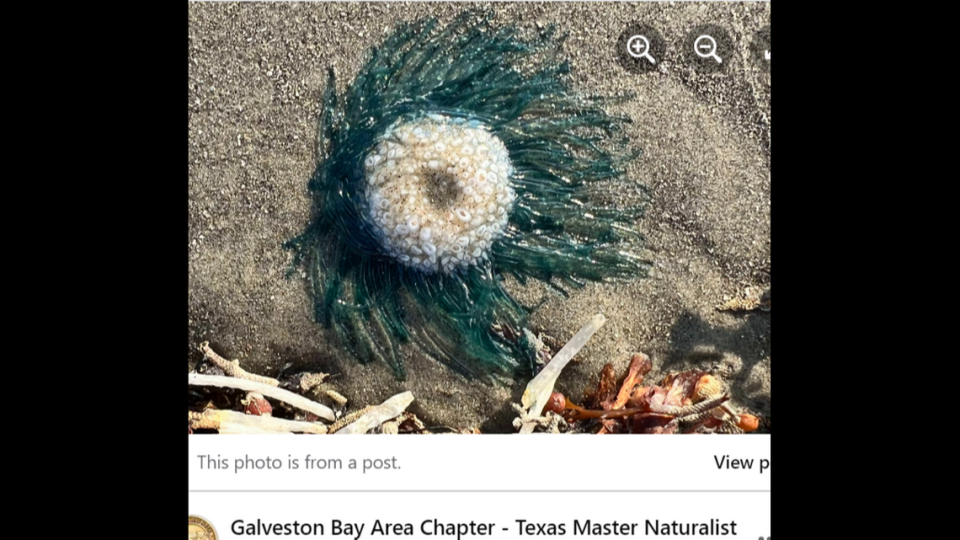Bright blue ‘buttons’ washing up on Texas coast, photos show. But don’t press them
Like a kid riding in the front seat of the family car for the first time, you might be tempted to press the buttons.
They’re washing up along the Texas Gulf coast, near Galveston, vibrant round forms dotting the sand, photos show.
But keep your hands to yourself around the blue button jellyfish, the Galveston Bay Area Chapter of the Texas Master Naturalist program warned in a July 3 Facebook post, sharing photos of several specimens.
Symmetrical, squishy and small, the blue button jellyfish’s blob-like beauty is obvious — but it isn’t what it appears.
For one, it isn’t always blue, according to the wildlife group. It can actually be yellow and turquoise, with turquoise being the most common around Galveston.

The second, and perhaps cruelest twist, is that the blue button is not a button. Nothing cool will happen if pressed, not even a satisfactory click or clack. Pushing or otherwise touching the blue button is actually a bad idea because it has tentacles armed with stinging cells that will irritate the skin on contact, according to the group.
Finally, the blue button jellyfish isn’t even a jellyfish. It’s a colony of creatures, called hydrozoans, that work together as a team, with each member carrying out a specific duty that benefits the whole, experts say.
“They look beautiful! But usually, when I see something like that, I panic by moving far, far away from it!” one person commented on the Facebook post.
Another commenter summed up their thoughts on the blue button very simply, calling it “beautiful and wicked.”
The blue button jellyfish’s sting is generally described as mild, but its name contains two lies and a half-truth, which does seem pretty wicked.
In the blue button’s defense, “its mouth also releases its waste,” according to the post, and that’s tough.
But why are these buttons appearing on Texas beaches?
“Blue Buttons are attracted to the shore by blooms of plankton that provide a supply of food,” the group said. “When you find one, look but don’t touch.”
While they aren’t particularly dangerous to people, dog owners should take extra care when walking a beach littered with blue button jellyfish, as dogs might try to lick or eat them, officials told the Australian Broadcasting Company after several pets were sickened.
“So if you’re on the beach and your dog starts chewing on grass like a lawn mower or looking for things to eat and looks quite agitated, it’s mostly likely they’ve eaten one of these,” Wayne Matherson, whose dog ate a blue button, told the news outlet. “You just need to get to a vet as soon as possible and they can help put it at ease and hopefully not get any secondary complications and have a belly full of rubbish.”
‘Not-so-welcome’ creature washes up on Texas beach. It may have sneaked over on ship
Fishermen wrestle catfish from Texas lake with bare hands. See the ‘monster’ catch
Blurry shape spotted by fisherman in lake spurs 33-year-old mystery, Kansas cops say
Driver needs rescue after ‘strange creature’ she saved loses temper, TX officials say


